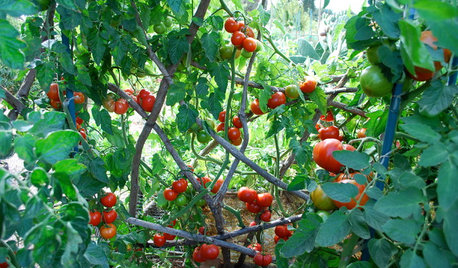Milk as fungicide
lou_spicewood_tx
17 years ago
Related Stories

GARDENING GUIDES6 Plants for Colorful Fall Foliage in the Water-Wise Western Garden
Try these colorful, drought-tolerant additions to your garden for a fall season filled with color
Full Story
HEALTHY HOMENontoxic Paint 101
If 'VOC' sounds like gobbledygook and you have no clue what causes that funny smell, check out this primer on ecofriendly paint types
Full Story
FARM YOUR YARDHello, Honey: Beekeeping Anywhere for Fun, Food and Good Deeds
We need pollinators, and they increasingly need us too. Here, why and how to be a bee friend
Full Story
EARTH DAYHow to Design a Garden for Native Bees
Create a garden that not only looks beautiful but also nurtures native bees — and helps other wildlife in the process
Full Story
GARDENING GUIDES6 Steps to Creating Your Butterfly Garden
Encourage these fanciful winged beauties to visit your garden while helping restore their fragmented habitat
Full Story
GARDENING GUIDESTexas Gardener's March Checklist
So long, freezing temperatures. It's time to kick off spring planting, lavish attention on lawns and sprinkle seeds to your heart's content
Full Story0
Sponsored






greenjeans_il
subywu
Related Professionals
Winder Landscape Architects & Landscape Designers · East Hanover Landscape Contractors · Fort Payne Landscape Contractors · Indio Landscape Contractors · West Haverstraw Landscape Contractors · Whittier Landscape Contractors · Woodland Landscape Contractors · Placerville Swimming Pool Builders · Rockwall Swimming Pool Builders · Thousand Oaks Swimming Pool Builders · Fort Lauderdale Fence Contractors · Hopkins Fence Contractors · Irvine Fence Contractors · North Hollywood Fence Contractors · Palo Alto Fence Contractorsgreatlakesmower
dchall_san_antonio
subywu
greatlakesmower
greenjeans_il
subywu
greenjeans_il
dchall_san_antonio
greenjeans_il
garybuker_yahoo_com
Kimmsr